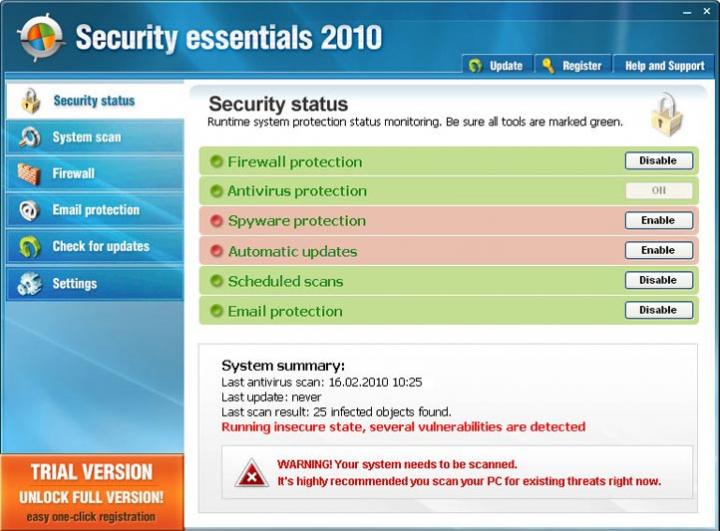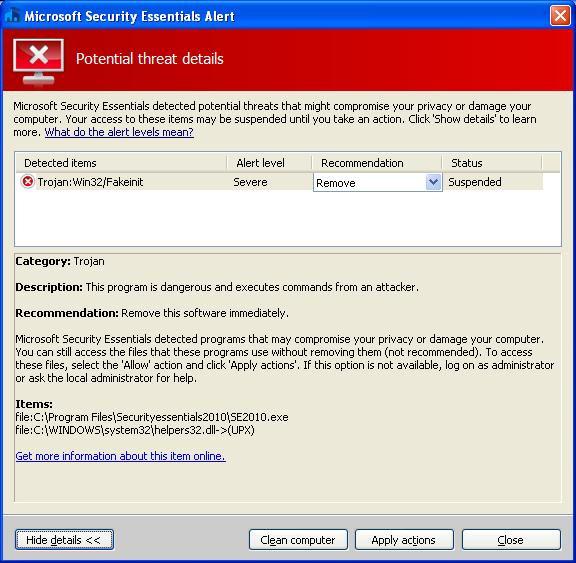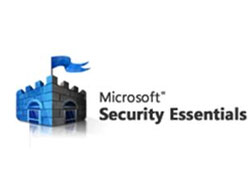Microsoft Security Essentials is the security software solution that Microsoft rolled out to replace Windows Live OneCare. The first Beta version was rolled out in the summer of 2009 and by autumn the final, stable version became available for download. Thanks to Microsoft Security Essentials, Windows user that ran genuine versions of the operating system could protect it from all the regular nasties one can expect to encounter online – viruses, Trojans, malware and so on. In the week following its release, more than 1.5 million people downloaded the software – which logged over 4 million malware detections.
The bottom line is that Microsoft Security Essentials does a proper job of protecting your Windows-powered computer and it does this at no cost whatsoever. These are characteristics that make it a popular application among regular computer users – and among malware spreaders.
People with malicious intent came up with a piece of malware that exploits Microsoft’s good name. To be more precise, they came up with a rogue security software application called Security essentials 2010. This rogue promises to provide antivirus, spyware, email and firewall protection. But the only thing it can do is trick you into thinking your system is infected; then it asks you to purchase a license to remove the infection.
“Well, it had to happen eventually. One of the oldest tricks used by rogue antivirus products is to use a similar name as, or have a similar look and feel to, legitimate security software. It’s been commonplace for them to mimic the Windows Security Center. So it was inevitable that the day would arrive when a rogue would masquerade as something similar to Microsoft Security Essentials. If anything, it surprises me a little that it’s taken so long,” commented David Wood on behalf of the Microsoft Malware Protection Center.
Keep in mind that Microsoft Security Essentials is offered by the Redmond-based software giant free of charge (you can download it here only if you’re running a genuine Windows version). If a software applications calls itself Security Essentials but asks for money, it’s not the Microsoft developed security solution.
Here is how the Security essentials 2010 rogue looks like:

And here is how the genuine Microsoft Security Essentials application looks like when it detects a threat:

The bottom line is that Microsoft Security Essentials does a proper job of protecting your Windows-powered computer and it does this at no cost whatsoever. These are characteristics that make it a popular application among regular computer users – and among malware spreaders.
People with malicious intent came up with a piece of malware that exploits Microsoft’s good name. To be more precise, they came up with a rogue security software application called Security essentials 2010. This rogue promises to provide antivirus, spyware, email and firewall protection. But the only thing it can do is trick you into thinking your system is infected; then it asks you to purchase a license to remove the infection.
“Well, it had to happen eventually. One of the oldest tricks used by rogue antivirus products is to use a similar name as, or have a similar look and feel to, legitimate security software. It’s been commonplace for them to mimic the Windows Security Center. So it was inevitable that the day would arrive when a rogue would masquerade as something similar to Microsoft Security Essentials. If anything, it surprises me a little that it’s taken so long,” commented David Wood on behalf of the Microsoft Malware Protection Center.
Keep in mind that Microsoft Security Essentials is offered by the Redmond-based software giant free of charge (you can download it here only if you’re running a genuine Windows version). If a software applications calls itself Security Essentials but asks for money, it’s not the Microsoft developed security solution.
Here is how the Security essentials 2010 rogue looks like:

And here is how the genuine Microsoft Security Essentials application looks like when it detects a threat:


























